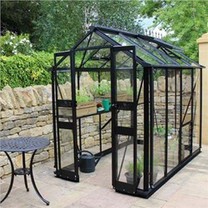What fields are glass greenhouses mostly used in?
Glass greenhouses are used in a variety of fields, including agriculture, horticulture, and floriculture. They are commonly used to grow a wide range of crops, including fruits, vegetables, herbs, and flowers.
In agriculture, glass greenhouses are used to extend growing seasons and increase yields. This is particularly important in areas with harsh climates or limited arable land. Greenhouses allow farmers to control the temperature, humidity, and light levels, which can result in higher-quality crops and more consistent yields. Additionally, greenhouses can protect crops from pests and diseases, reducing the need for pesticides and fungicides.
In horticulture, glass greenhouses are used to grow ornamental plants, such as houseplants and bedding plants. Greenhouses allow for precise control over growing conditions, which can result in healthier plants and more vibrant flowers. Additionally, greenhouses can protect plants from harsh weather conditions and pests, allowing for year-round production.
In floriculture, glass greenhouses are used to grow flowers for use in the floral industry. Greenhouses allow for year-round production of flowers, which is essential for meeting the demands of the market. Additionally, greenhouses can provide a controlled environment that results in higher-quality and more consistent blooms.
In recent years, glass greenhouses have also been used for research purposes, particularly in the field of plant genetics. Researchers can use greenhouses to study the effects of different growing conditions on plant growth and development, as well as to test new varieties of crops.
glass greenhouses are a versatile tool that can be used in a variety of fields to improve crop yields, enhance plant quality, and increase production efficiency.






